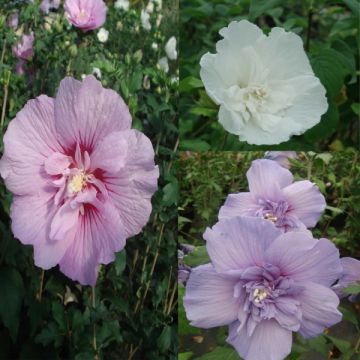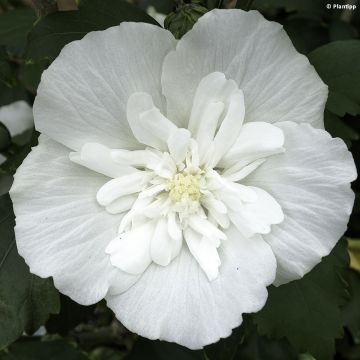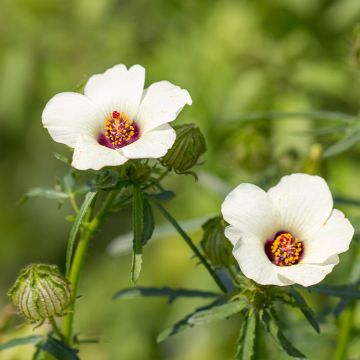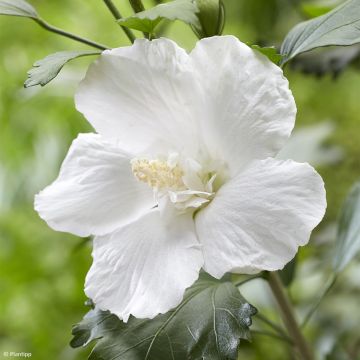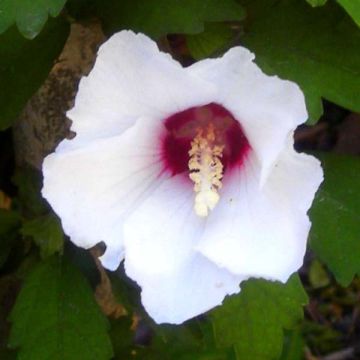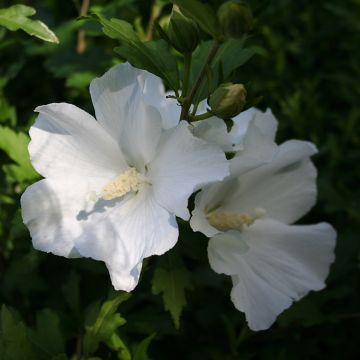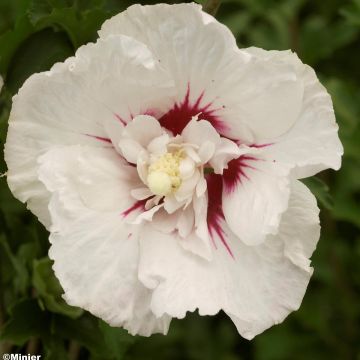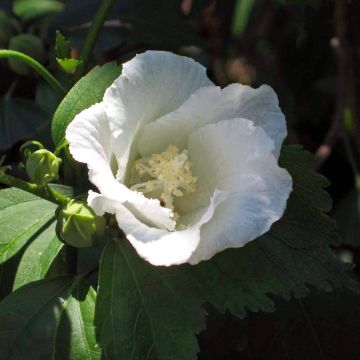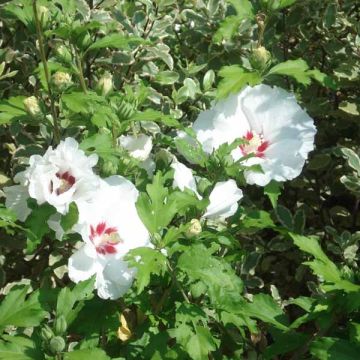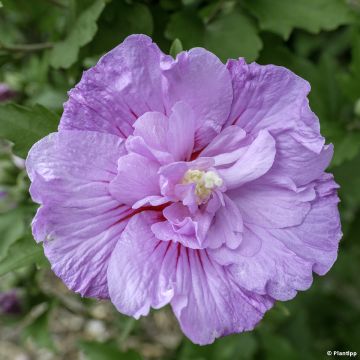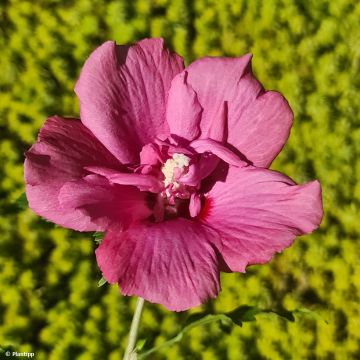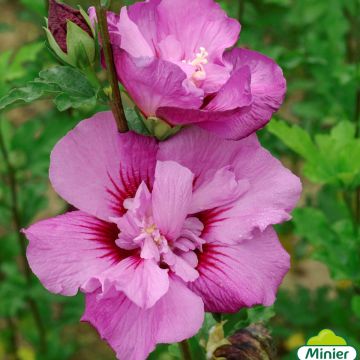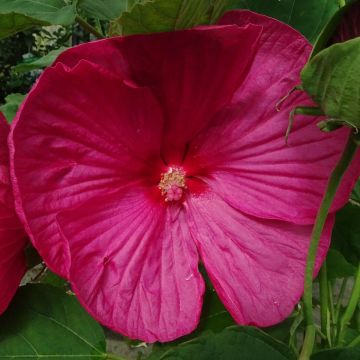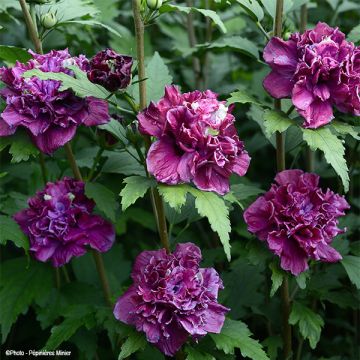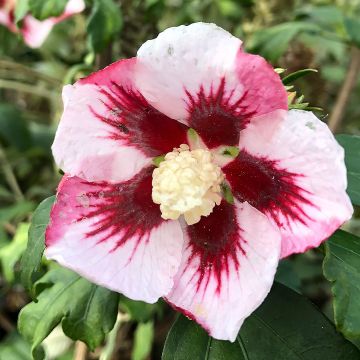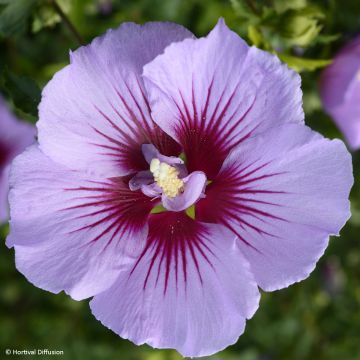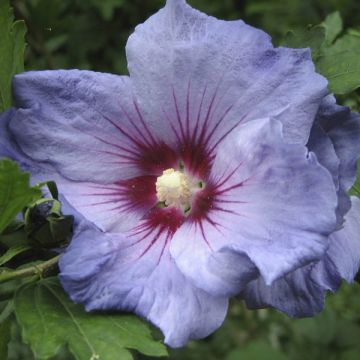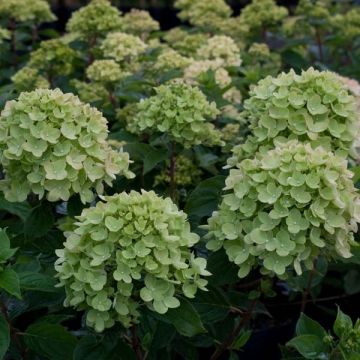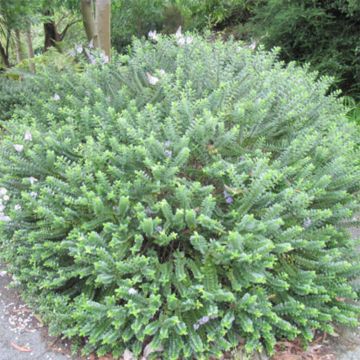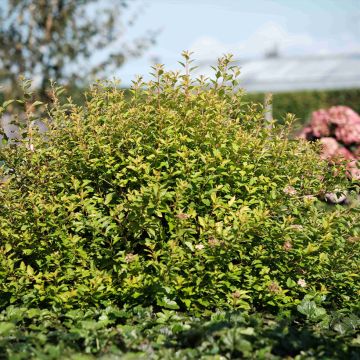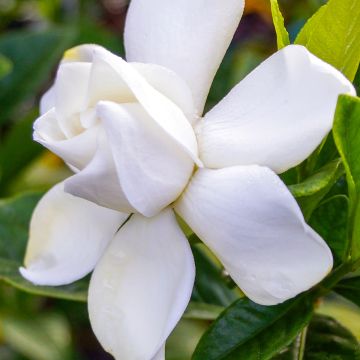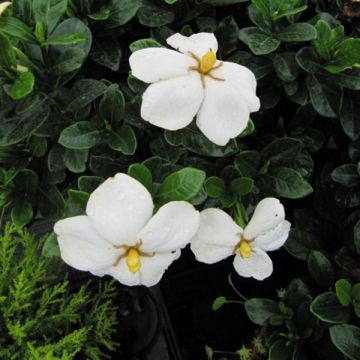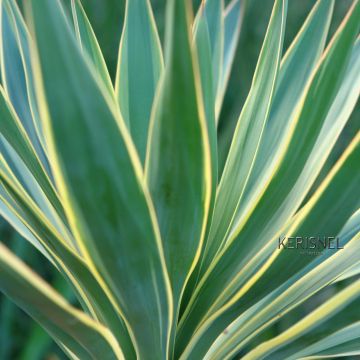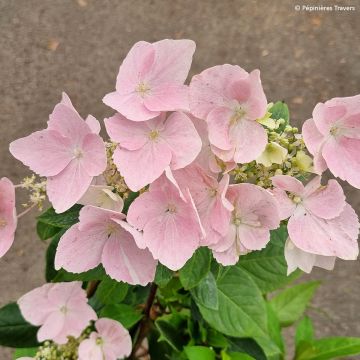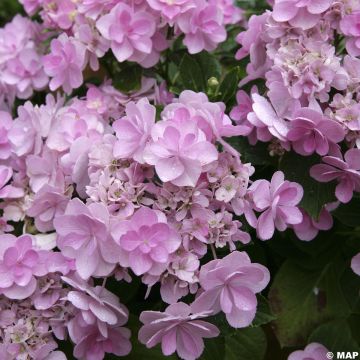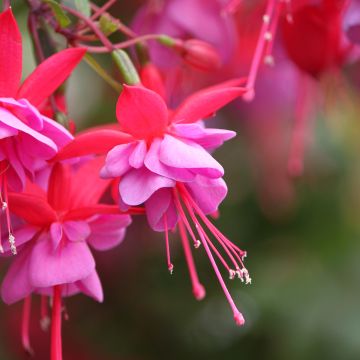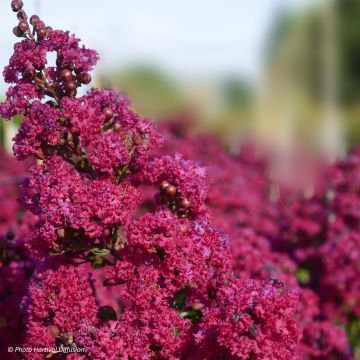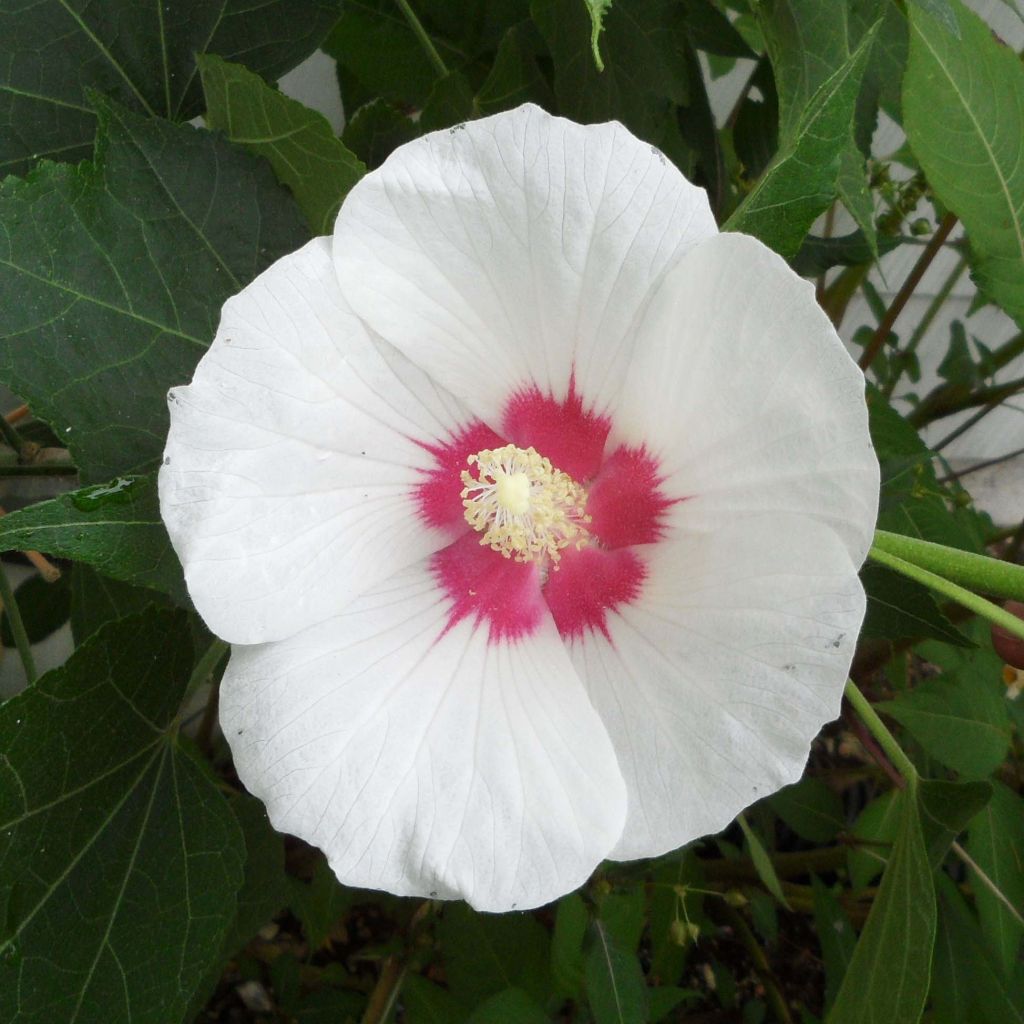

Hibiscus paramutabilis
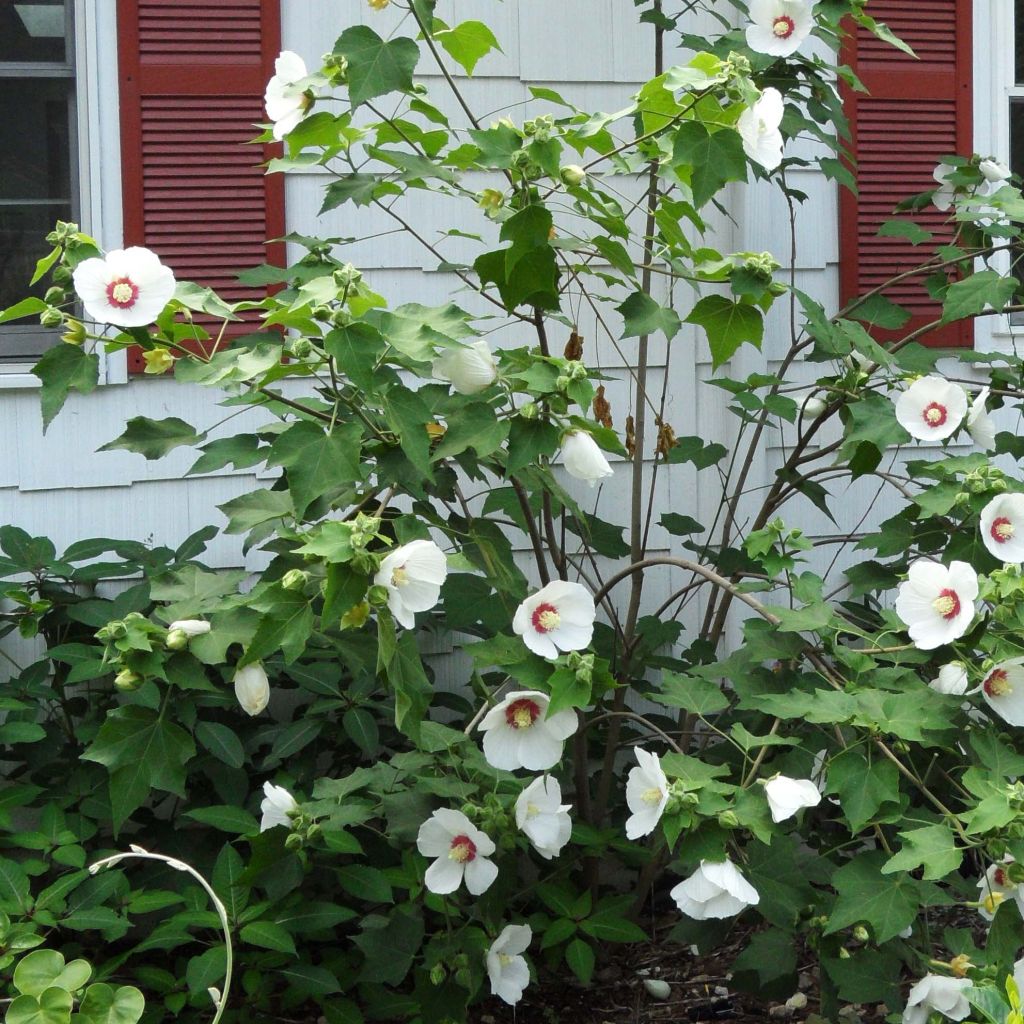

Hibiscus paramutabilis
Hibiscus paramutabilis
Hibiscus paramutabilis
Rose Mallow
Why not try an alternative variety in stock?
View all →This plant carries a 24 months recovery warranty
More information
We guarantee the quality of our plants for a full growing cycle, and will replace at our expense any plant that fails to recover under normal climatic and planting conditions.
From €5.90 for pickup delivery and €6.90 for home delivery
Express home delivery from €8.90.
Delivery to Corse prohibited: UE law prohibits the import of this plant from mainland France to Corse as part of the fight against Xylella fastidiosa. Please accept our sincere apologies.
More information
Does this plant fit my garden?
Set up your Plantfit profile →
Description
The Hibiscus paramutabilis is a beautiful shrub that can grow over 3 metres (9 feet 10 inches) in all directions. It is less popular than its cultivated cousin, Althaea, but equally abundant in flowers from summer to the first frost and is hardy enough to withstand temperatures as low as -15°C. Its lovely flowers are white to pink, sometimes entirely pink, with a stunning carmine red spot in the centre. The plant has larger foliage than its cousin, which is light green and slightly downy. In the garden, this hibiscus is as sturdy and accommodating as its close relative. It is easy to combine in a flowering hedge or border, growing effortlessly in the sun and in ordinary but deep and well-drained soil.
The Hibiscus paramutabilis is a deciduous bush in central China belonging to the Malvaceae family. It grows between 500 and 1000m (1640 ft 5 in and 3280 ft 10 in) above sea level. In nature, it can reach 4m (13 ft 1 in) in all directions, but in our gardens, it will usually peak at 2.50m (8 ft 2 in). Its branches are large, slightly arched, and support a bushy, open, and somewhat loose habit. The plant has moderate growth, and its deciduous palmate leaves have 3 to 7 lobes with toothed edges and are covered with sparse down. The plant produces short-lived flowers from July to October that wither in 24 hours. However, more flowers are produced if the weather remains mild. They are single, solitary, 12 to 20cm (4.7 to 7.9 in) wide, and come in shades of pink and white, depending on the plant. The flowers are arranged around a carmine red throat and carried by pedicels 2 to 4cm (0.8 to 1.6 in) long. The fruits are oblong capsules covered with down.
The Hibiscus paramutabilis grows well in the same conditions as the Althaea and serves the same purpose in the garden. It thrives in bright, warm areas but can handle some light shade in southern regions. This low-maintenance hibiscus grows slowly but steadily during the first few years. It's best to plant it in a protected spot with soil that stays somewhat moist until the end of summer. It can be used in a medium-sized hedge, in combination with other hibiscus of different colours, botanical roses, or buddleias, as a standalone plant or at the back of a perennial border composed of daylilies, asters or shrubby salvias.
Report an error about the product description
Hibiscus paramutabilis in pictures
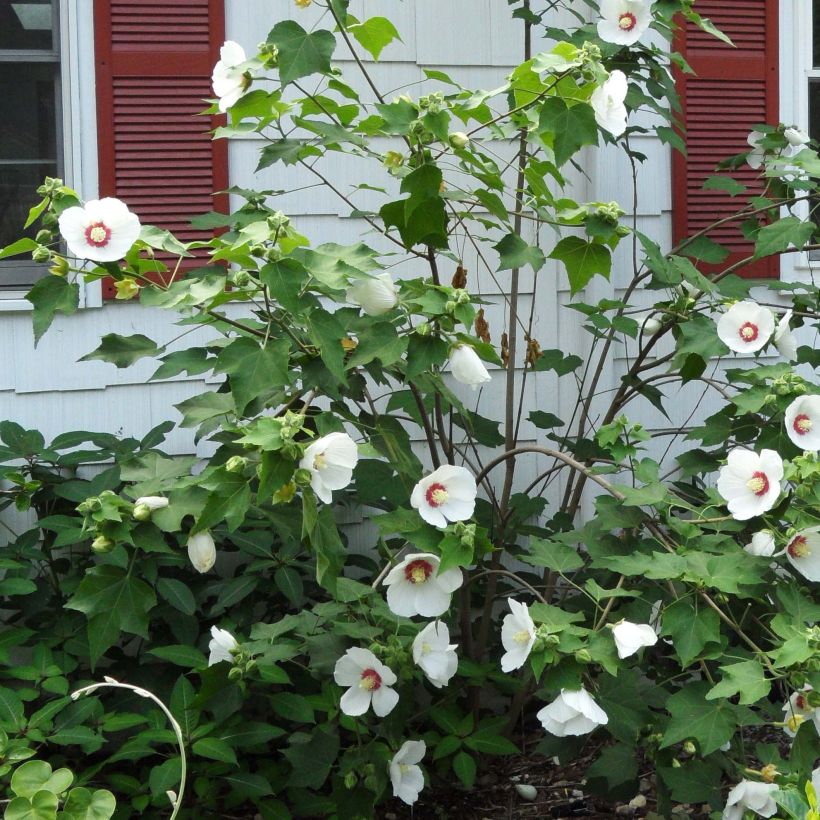

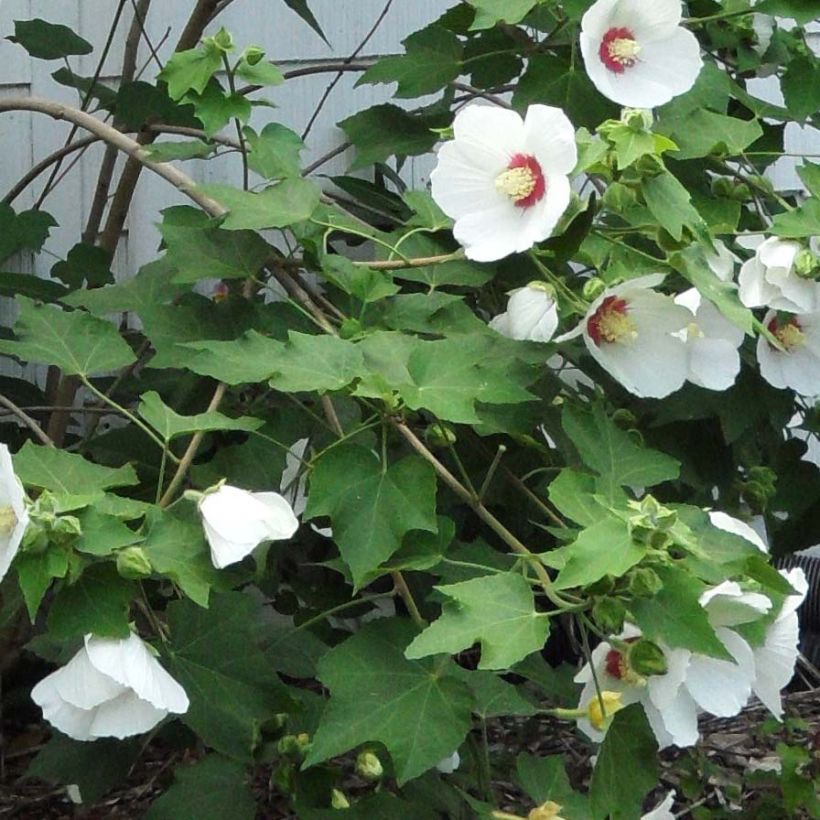

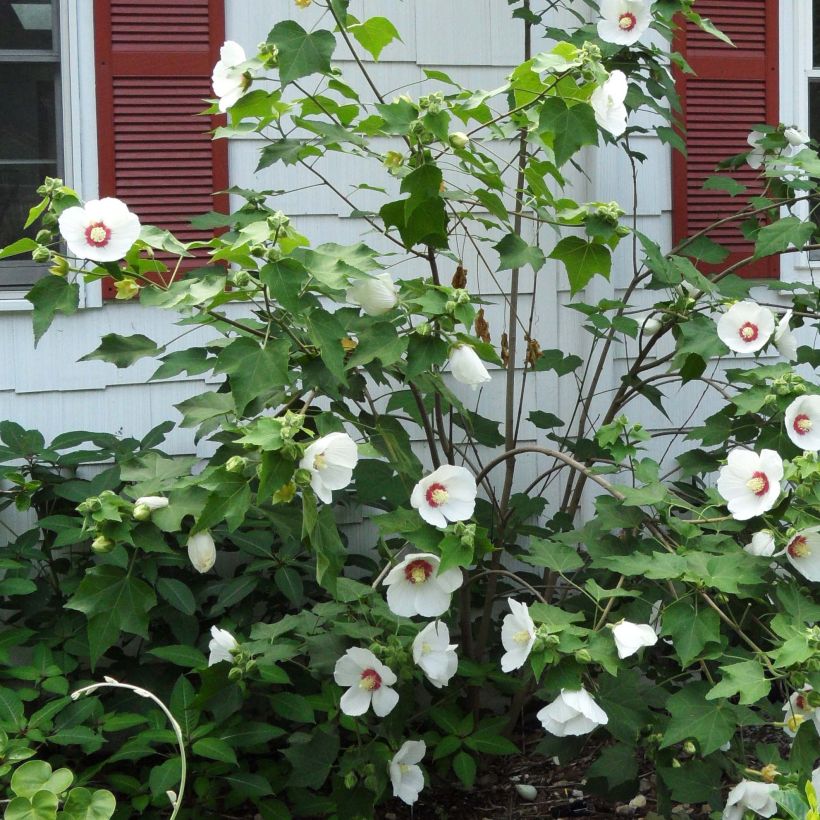

Plant habit
Flowering
Foliage
Botanical data
Hibiscus
paramutabilis
Malvaceae
Rose Mallow
China
Other Hibiscus
Planting and care
To plant Hibiscus paramutabilis, choose a sunny location or a partially shaded spot if you live in a warmer climate. The best time to plant is in spring or autumn, in a well-drained, deep, loose, fertile soil that retains moisture. If your garden soil needs improvement, add some compost and sand. Make a deep planting hole and water the plant abundantly after planting. Don't worry if the vegetation only forms after May, as it's entirely normal for this bush. A mature plant can withstand temperatures as low as -15°C (5°F), so it can grow in almost all areas except mountainous or extremely cold regions in winter.
Although bush hibiscus can tolerate heat and occasional dryness, they thrive in soils that retain moisture in summer. You should consider mulching the base of these bushes to help keep the soil moist.
Planting period
Intended location
Care
-
, onOrder confirmed
Reply from on Promesse de fleurs
Summer-flowering shrubs
Haven't found what you were looking for?
Hardiness is the lowest winter temperature a plant can endure without suffering serious damage or even dying. However, hardiness is affected by location (a sheltered area, such as a patio), protection (winter cover) and soil type (hardiness is improved by well-drained soil).

Photo Sharing Terms & Conditions
In order to encourage gardeners to interact and share their experiences, Promesse de fleurs offers various media enabling content to be uploaded onto its Site - in particular via the ‘Photo sharing’ module.
The User agrees to refrain from:
- Posting any content that is illegal, prejudicial, insulting, racist, inciteful to hatred, revisionist, contrary to public decency, that infringes on privacy or on the privacy rights of third parties, in particular the publicity rights of persons and goods, intellectual property rights, or the right to privacy.
- Submitting content on behalf of a third party;
- Impersonate the identity of a third party and/or publish any personal information about a third party;
In general, the User undertakes to refrain from any unethical behaviour.
All Content (in particular text, comments, files, images, photos, videos, creative works, etc.), which may be subject to property or intellectual property rights, image or other private rights, shall remain the property of the User, subject to the limited rights granted by the terms of the licence granted by Promesse de fleurs as stated below. Users are at liberty to publish or not to publish such Content on the Site, notably via the ‘Photo Sharing’ facility, and accept that this Content shall be made public and freely accessible, notably on the Internet.
Users further acknowledge, undertake to have ,and guarantee that they hold all necessary rights and permissions to publish such material on the Site, in particular with regard to the legislation in force pertaining to any privacy, property, intellectual property, image, or contractual rights, or rights of any other nature. By publishing such Content on the Site, Users acknowledge accepting full liability as publishers of the Content within the meaning of the law, and grant Promesse de fleurs, free of charge, an inclusive, worldwide licence for the said Content for the entire duration of its publication, including all reproduction, representation, up/downloading, displaying, performing, transmission, and storage rights.
Users also grant permission for their name to be linked to the Content and accept that this link may not always be made available.
By engaging in posting material, Users consent to their Content becoming automatically accessible on the Internet, in particular on other sites and/or blogs and/or web pages of the Promesse de fleurs site, including in particular social pages and the Promesse de fleurs catalogue.
Users may secure the removal of entrusted content free of charge by issuing a simple request via our contact form.
The flowering period indicated on our website applies to countries and regions located in USDA zone 8 (France, the United Kingdom, Ireland, the Netherlands, etc.)
It will vary according to where you live:
- In zones 9 to 10 (Italy, Spain, Greece, etc.), flowering will occur about 2 to 4 weeks earlier.
- In zones 6 to 7 (Germany, Poland, Slovenia, and lower mountainous regions), flowering will be delayed by 2 to 3 weeks.
- In zone 5 (Central Europe, Scandinavia), blooming will be delayed by 3 to 5 weeks.
In temperate climates, pruning of spring-flowering shrubs (forsythia, spireas, etc.) should be done just after flowering.
Pruning of summer-flowering shrubs (Indian Lilac, Perovskia, etc.) can be done in winter or spring.
In cold regions as well as with frost-sensitive plants, avoid pruning too early when severe frosts may still occur.
The planting period indicated on our website applies to countries and regions located in USDA zone 8 (France, United Kingdom, Ireland, Netherlands).
It will vary according to where you live:
- In Mediterranean zones (Marseille, Madrid, Milan, etc.), autumn and winter are the best planting periods.
- In continental zones (Strasbourg, Munich, Vienna, etc.), delay planting by 2 to 3 weeks in spring and bring it forward by 2 to 4 weeks in autumn.
- In mountainous regions (the Alps, Pyrenees, Carpathians, etc.), it is best to plant in late spring (May-June) or late summer (August-September).
The harvesting period indicated on our website applies to countries and regions in USDA zone 8 (France, England, Ireland, the Netherlands).
In colder areas (Scandinavia, Poland, Austria...) fruit and vegetable harvests are likely to be delayed by 3-4 weeks.
In warmer areas (Italy, Spain, Greece, etc.), harvesting will probably take place earlier, depending on weather conditions.
The sowing periods indicated on our website apply to countries and regions within USDA Zone 8 (France, UK, Ireland, Netherlands).
In colder areas (Scandinavia, Poland, Austria...), delay any outdoor sowing by 3-4 weeks, or sow under glass.
In warmer climes (Italy, Spain, Greece, etc.), bring outdoor sowing forward by a few weeks.

































